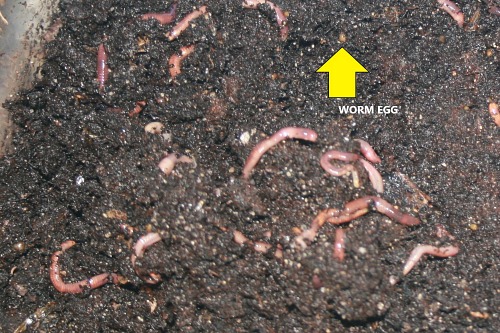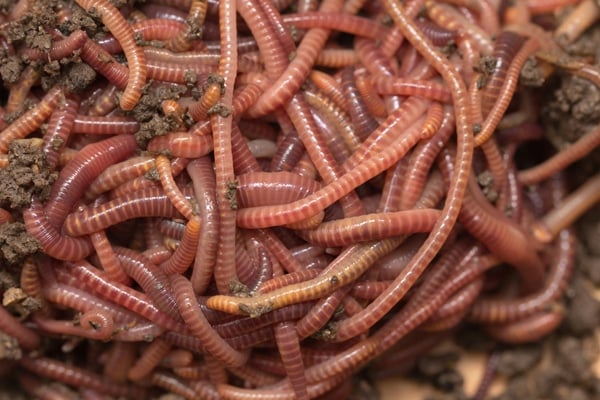Improve Your Fishing Success with Red Wiggler Express Supplies
Improve Your Fishing Success with Red Wiggler Express Supplies
Blog Article
Red Wigglers: The Unsung Heroes of Organic Waste Recycling
Red wigglers, or Eisenia fetida, work as crucial representatives in the natural waste reusing procedure, transforming thrown out materials into useful vermicompost. Their reliable malfunction of organic issue not only boosts dirt quality however also adds to lasting waste management methods. As the world increasingly seeks remedies to battle waste buildup and boost agricultural performance, comprehending the duty of these worms comes to be necessary. What systems enable them to grow in compost settings, and how can they be properly utilized in both residential and business settings? Checking out these concerns reveals the more comprehensive effects of vermicomposting in our environmental landscape.
What Are Red Wigglers?
The exceptional durability of red wigglers, scientifically known as Eisenia fetida, underscores their critical role in natural waste recycling. These tiny, reddish-brown earthworms are normally found in decaying organic issue, such as compost heap and manure heaps. Lake Hickory Bait. Unlike various other earthworm types, red wigglers thrive in nutrient-rich settings and are highly effective at damaging down organic materials, making them essential for vermicomposting

(Lake Hickory Bait)In addition to their function in waste decrease, red wigglers add to soil wellness by enhancing soil structure and oygenation through their delving tasks (Lake Hickory Bait). Their presence in composting systems not only improves disintegration prices however additionally advertises a lasting method to squander management, illustrating their importance in eco-friendly preservation initiatives
Benefits of Composting With Worms
Composting with worms, specifically red wigglers, offers countless benefits that improve both waste administration and dirt wellness. Initially, these worms successfully damage down natural waste, transforming it into nutrient-rich vermicompost that enhances soil. This process accelerates decomposition, allowing for a faster recycling of cooking area scraps and various other natural products contrasted to typical composting approaches.
Furthermore, the vermicompost created by red wigglers is brimming with helpful bacteria, which assist improve dirt framework, aeration, and moisture retention. This boosts the total health and wellness of plants, promoting vigorous development and raised returns in gardens and farming setups. The use of worms in composting decreases the manufacturing of greenhouse gases, such as methane, contributing to an extra lasting waste administration system.

Exactly How to Begin Vermicomposting
Developing a vermicomposting system is an uncomplicated process that can yield considerable advantages for both waste monitoring and dirt enrichment. To begin, choose an appropriate container, such as a plastic container or wood box, with adequate ventilation holes to guarantee appropriate air movement. The measurements should ideally be around 2 feet by 3 feet, enabling sufficient area for the worms to grow.
Next, prepare bedding material, which can include shredded newspaper, cardboard, or coconut coir. This bedding ought to be moistened to create a suitable habitat for the worms. When the bed linens remains in place, present red wigglers (Eisenia fetida) right into the bin, typically around one pound of worms for every single square foot of area.
Adhering to the positioning of worms, add organic waste, such as vegetables and fruit scraps, coffee premises, and crushed eggshells. Avoid adding milk, meat, or oils, as these can develop smells and draw in insects. Finally, place the container in a shaded, temperature-controlled area to maintain optimum problems for worm activity. With these actions, you will successfully start a vermicomposting system that adds to sustainable waste monitoring and enhances your soil.
Preserving a Healthy And Balanced Worm Bin
(Red Wiggler Express)Maintaining a worm bin growing needs normal interest and treatment to guarantee the wellness of the red wigglers and the effectiveness of the composting procedure. Proper upkeep begins with checking the wetness degrees; the article bin must be wet however not saturated. A good policy of thumb is to maintain a consistency comparable to a wrung-out sponge.
Aeration is vital as well. Carefully blending the bedding and food scraps every couple of weeks protects against compaction and makes certain that all worms have access to oxygen. Additionally, it is necessary to feed the worms properly. A balanced diet regimen of vegetables and fruit scraps, coffee premises, and crushed eggshells ought to be supplied in small amounts to prevent overfeeding, which can lead to odors and bugs.
Temperature level law is another vital aspect. Red wigglers flourish in a series of 55 to 77 levels Fahrenheit. If the container ends up being also warm or cool, the worms might become stressed - Lake Hickory Bait. Regularly inspect for indications of health and wellness, such as worm populace development and the existence of healthy castings. By carefully taking care of these factors, one can preserve a robust and efficient worm bin.
Influence On Sustainable Living
The successful maintenance of a worm container not only benefits the wellness of red wigglers however likewise contributes considerably to lasting living techniques. By recycling organic waste, such as cooking area scraps and lawn particles, red wigglers aid divert substantial quantities of material from land fills. This decrease in waste not only lowers greenhouse gas discharges but additionally decreases the environmental worry connected with waste management.
Additionally, the castings generated by red wigglers act as a nutrient-rich organic plant food, enhancing dirt health and advertising plant growth. This all-natural alternative to chemical plant foods supports lasting agriculture and horticulture practices, lowering reliance on artificial inputs that can hurt ecosystems. In addition, worm composting fosters understanding of waste management, motivating people and neighborhoods to take on more lasting behaviors.

Conclusion
In recap, red wigglers serve as vital factors to natural waste reusing through their efficient disintegration of natural materials. By integrating vermicomposting right into waste administration techniques, individuals and areas can dramatically minimize waste while promoting environmental sustainability.
Report this page